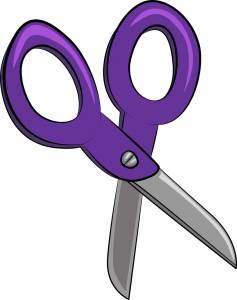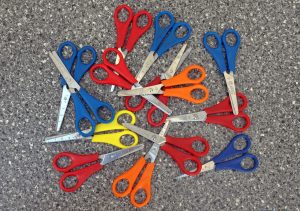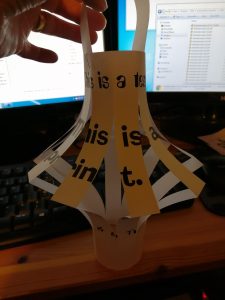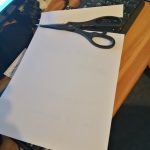 Writing In Your Coloring Diary
Writing In Your Coloring Diary
You have probably already found how useful a diary can be, not just for keeping track of appointments but also as a journal and even for coloring, to pass the time, reduce anxiety or even as a hobby. If you do any writing or coloring at all, you may find sometimes that your hand aches or that your writing is not as neat as it was maybe years ago. If you use a keyboard much, that ache or lack of neat handwriting may be because you are not keeping up the skills of writing that you acquired as a young child, when you learned to use your fine motor skills effectively. Do you remember cutting out things when at school, or even at home? Those games and items you cut out with arts and crafts scissors contributed to your ability to write at a later stage.
Scissors For Toddlers
If your toddler or pre-schooler is 2 years old or older then maybe it’s time for them to use what you may have previously considered to be scary tools for small kids – scissors! Using these is a fun way for young kids to develop scissor skills preschool, improving their hand dexterity, fine motor skills and pre-writing skills and you can help your child practice these skills by teaching them to safely use scissors.

Fine Motor Skills
So what are these fine motor skills? These are the small movements we all make every day when brushing our teeth or fastening buttons, for instance. They rely on using the small muscles in our hands and arms. These are different from the gross motor skills we practise when using our large muscles, such as running, jumping, skipping or throwing a ball. We learn these first, when we start walking, for instance. The fine motor skill movements are quite complex and require good co-ordination between the brain and the muscles. The more we practise these, the better we become at them. They build on the gross motor movements we have already acquired, so cannot be introduced earlier than the age of 2 years. We need fine motor skill movements when drawing or writing or using scissors, so we can hold and use a crayon or pencil or cut paper. We also use them for stringing beads or stacking blocks or using a ruler or manipulating small objects or tools. It’s important for kids to have a go at all of these activities before they try learning to write or draw: and using scissors will help them develop dexterity and strengthen both their small muscles and the co-ordination they will need for those later important tasks like writing.
These fine motor skills are essential not just for academic skills but also for everyday life tasks like eating food or getting dressed. Children who cannot do these activities may suffer because their playing options with their peers will be limited and their academic performance may also be affected, all of which can affect their social life.
Different Kids Different Rates
Children do not all develop at the same rate. If you have more than one child, you may already have noticed that one talked earlier than another or that one developed physically much faster. Young children develop at different rates and this includes learning fine motor skills and scissor skills. It is important to be patient and work at your child’s development level. Once your child is ready to move forward with learning to use scissors, you can make sure they learn the correct way to place their hand and hold the scissors, perhaps by putting your hand over theirs in the right position and helping them learn this new skill.
Workbooks And Activities
Of course, you can always get a scissors skill workbook with pictures and lines in it for practising cutting, or you can print out scissor skills worksheets from sites online but the easiest way to start is probably to take some scrap paper and draw lines on it with a marker or crayon and get your child to cut along those. To start out, draw straight lines – they don’t need to be made with a ruler – just hand drawn straight lines. Then you can move onto squiggly lines, curved lines, zig zags and shapes such as squares, rectangles, hearts, circles, triangles and pentagons. You can even start out on scissor skills by getting them to cut the corners off old pieces of paper or making fringes, by cutting lots of short lines along a side of paper.
Paper Lanterns
 Remember the old paper lanterns you used to make? Take an A4 or US letter size sheet of light card and cut about an inch off one of the short sides (this makes the handle at the end of this project).
Remember the old paper lanterns you used to make? Take an A4 or US letter size sheet of light card and cut about an inch off one of the short sides (this makes the handle at the end of this project). 
 Now fold the card in half. Cut a wide fringe at the fold, then open out and stick the two ends together, either with a stapler or sticky tape. Now staple or stick on the piece you cut off at the start to make a paper handle and you have a paper lantern. These are simple scissor skills that help develop fine motor skills, while having fun. You can watch a video of making a paper lantern here:
Now fold the card in half. Cut a wide fringe at the fold, then open out and stick the two ends together, either with a stapler or sticky tape. Now staple or stick on the piece you cut off at the start to make a paper handle and you have a paper lantern. These are simple scissor skills that help develop fine motor skills, while having fun. You can watch a video of making a paper lantern here:
If your child complains their hand is tired of cutting, it means they need to practice those skills more because their muscles are not used to this work. This kind of practice will help them immensely when starting to write and draw.
If they get very tired of cutting things out, let them color pictures in before cutting them out, this also helps with fine motor skills and the pictures can be used to make picture scenes for display.
Teach your child to use scissors safely. They will have great fun while improving their hand and finger dexterity and their fine motor skills.
 And once they come to play the game rock paper scissors, they will understand what scissors are and why two fingers extended represents a pair of scissors. If you want to learn to play this game, you can watch this video:
And once they come to play the game rock paper scissors, they will understand what scissors are and why two fingers extended represents a pair of scissors. If you want to learn to play this game, you can watch this video: